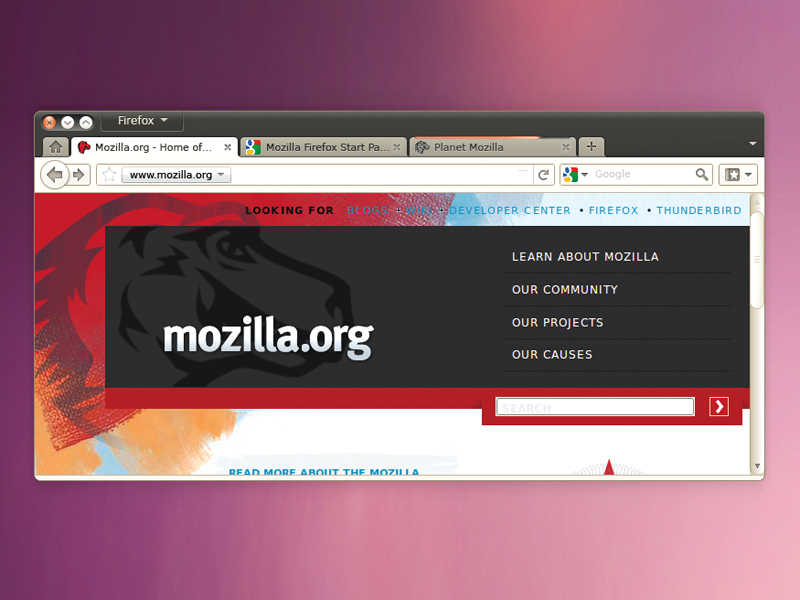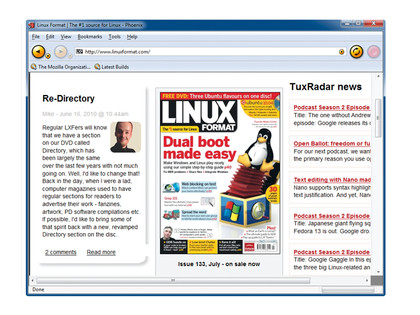What's next for Firefox on Linux?
The darling of free software is facing a threat from a former ally

Firefox is the open source project your non-open source friends are most likely to have heard of. It's also the one they're most likely to have used. In fact, Firefox has brought open source into the light of mainstream attention, getting coverage alongside all the usual technology and systems.
At the same time, using the language of one of its own slogans, it's enabled us to 'take back the web'. It's become such a dominant force online that site builders can no longer ignore Firefox rendering compatibility as they used to.
Internet Explorer is no longer the only browser, and this means people finally have access to an unabridged version of the web on their desktops. But after some spectacular initial success, the Firefox mission has stalled.
Growth over the last year has been static, and things are about to get worse. A competing open source browser has been able to go from zero to 7% market share, and doesn't show any sign of slowing down.
This is Google's Chrome, built with many of the same motivations that drove Firefox's development, and Google has a wide and comprehensive plan for Chrome's future.
However, it's not over for the browser yet. This is just the end of the honeymoon period. It now has to learn to adapt and evolve in an environment where it's not the only open source browser at the watering hole, and Internet Explorer is no longer just an easy target for destruction.
Where it began
Get daily insight, inspiration and deals in your inbox
Sign up for breaking news, reviews, opinion, top tech deals, and more.
Starting life in 2002, Firefox was the antidote to what its authors saw as the bloated, full-fat, feature creep of Mozilla's Application Suite. Mozilla inherited a lot of its appearance and aesthetic from close ally Netscape, a company that needed to monetise the browser and satisfy a different community.
As a result, it found it very difficult to assert its own independence. Frustrated, Blake Ross and David Hyatt copied Mozilla and pruned functionality, while a colleague, Ben Goodger, took what he saw as a dysfunctional user interface and turned it into the minimal theme that helped make Firefox Phoenix 1.0 such a success.

The release notes proclaimed, "Phoenix is not your father's Mozilla browser. It's a lean and fast browser that doesn't skimp on features." Phoenix was enough of a success that Mozilla decided to push the browser forward as an official project. The next 18 months followed a "long, difficult, all-consuming road," according to Goodger, but finally, on November 9 2004, Firefox 1.0 was released, and the world rejoiced.
Ascendency
Firefox's growth is as much thanks to its circumstance as it is to its features and foresight. During those early years, it was able to take advantage of Microsoft's poor Internet Explorer security record, as well as its reticence in updating the browser.
This led Firefox on a trajectory that now gives it almost a third of the browser market, and nearly all of it at the expense of various versions of Internet Explorer. Firefox has helped bring tabbed browsing, extensions, anti-phishing protection and genuine security to everyone.
But more importantly, it's allowed non-technical, non-Linux people understand what open source software is and what it can do. Firefox is free for all users, and works on a massive variety of platforms.
Firefox used to enjoy an excellent relationship with Google, thanks to the fact that about 90% of Mozilla's revenue is generated from Google being the browser's default search engine. But the pairing became strained when Google announced plans to create its own open source browser and released the first version for Windows in September 2008.
What's interesting about Chrome is that there are two versions of it. It's the official Google product and is only available as a binary. But because it relies on so many free software libraries – including WebKit, Portable Runtime and SQLite – Google also releases the source code under a project it calls Chromium.
When built, this is identical to Chrome, with a few exceptions: the logo's different, there's no auto-updater and no usage statistics are sent to Google.
Chrome sent out shockwaves because it's essentially done a Firefox, reinventing a minimal interface in the face of feature creep. It's fast, light and very compatible with the vast majority of websites. Combine this with its makers' insider knowledge on how to enhance Google application performance and searching, and it's easy to see why it's done so well.
By May 2010, Chrome had captured 7% of worldwide browser users. While usage data doesn't yet suggest these users have switched from Firefox, they're certainly potential Firefox users who've found a better alternative. It's winning back and keeping loyalty that's the challenge for Firefox.